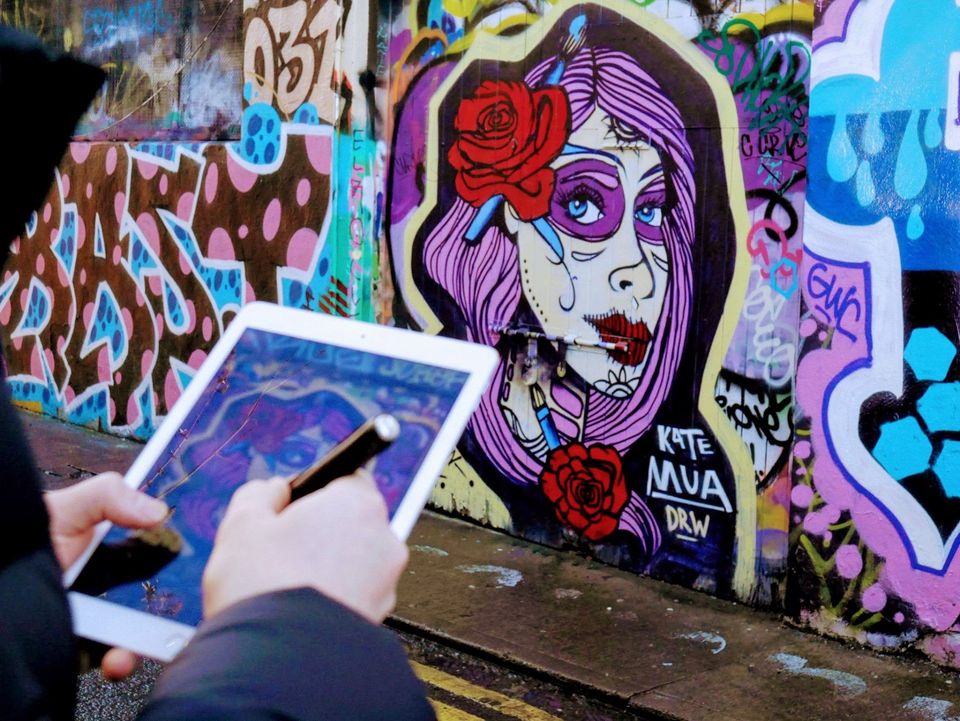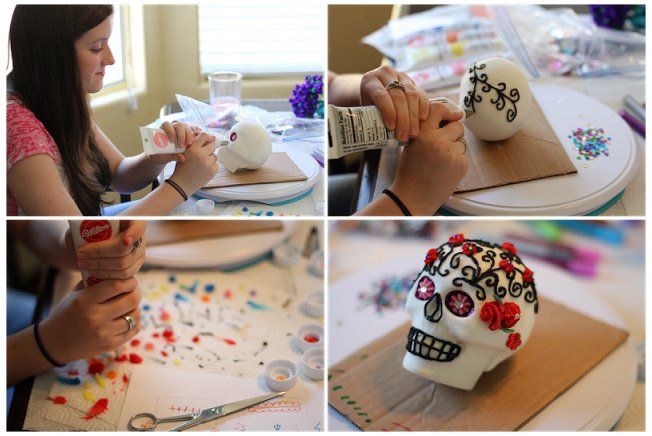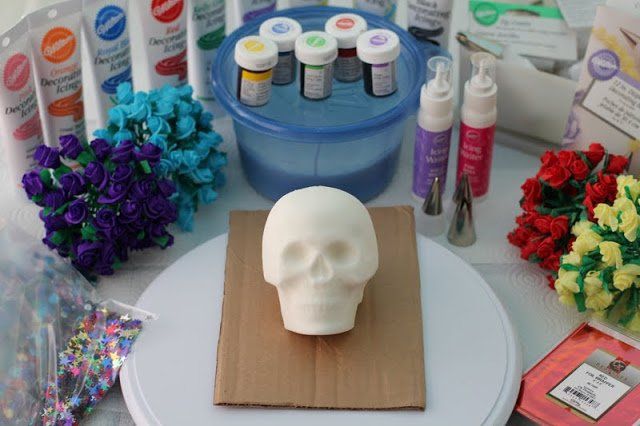How to make sugar skulls
Website Editor • February 26, 2020
Over the past few years, sugar skulls (also known as Calaveras or calaveras de azúcar in Spanish) have become extremely popular - you may have seen them plastered all over the many new burrito restaurants popping up in Dublin.
While you may associate them with a Mexican dish that is not even that popular in Mexico,
their origin is a lot more sweet than savoury. A Calavera is typically a representation of a human skull, with brightly coloured designs and decorations in the form of sugar. As for its origin, it is traditional folk art from southern Mexico used to celebrate the “Day of the dead”, or Diá de Los Muertos, and the Roman Catholic holiday All Soul’s Day. The term is most often applied to the edible and decorative skulls made from clay and sugar during the celebration day. Spirits of the dead people are welcomed back to their home with artistically decorated Calaveras made by their families or loved ones.
Day of the Dead holiday is celebrated in southern and central Mexico during the chilly days of November 1 and 2. People with the ancient belief come together to honor their deceased loved one, believing that the gates of heaven are opened at the midnight and the spirits of all the deceased children are allowed to reunite with their families for 24 hours.
Families take the sugar skulls and flowers to the tomb and graveyard to decorate it. The sugar skulls are decorated colorfully with colored sugar, pieces of bright foil, icing and also bear the name of the deceased member who is being honored. They can last a year if kept dry and safe and are relatively easy to make. Because of their brightly coloured and often psychedelic designs, they’ve become extremely popular in graphic design and logo circles.

Things you will need:
- Some flat plates or cardboard panels
- Sugar skull molds
- Meringue powder
- Water as required
- Icing sugar (powdered) for the royal icing
- Fine granulated sugar
If you don’t have meringue powder it’s not a big deal, you can still make a sugar head without it. But since it acts as a binder to harden the sugar, if you don’t use it your sugar skull might easily fall apart. The powder is purely edible and it is made of dried eggs, so you can easily purchase one from most shops.
Steps to make sugar skull:
Mix the ingredients: take the granulated sugar and mix it with meringue powder and water. Don’t add too much water: you don’t want a paste form. Thoroughly mix everything for a few minutes until you get a consistency like sand. Now, take a small amount of mixture and form an indentation with your thumb. If the clump doesn’t fall apart, it means that the mixture is ready and it’s time to go to the next step: molding.
Mold the Mixture: Take the sugar skull mold and pack it tightly with the mixture. Use a sharp metal object like a knife or scraper to remove the excessive mixture. Now, take a cardboard plate or panel over the mold, gently flip it over and place it on a flat surface. Reveal your sugar skull by carefully removing the mold.
Let it dry: Leave the sugar skull in an airy place and let it dry for at least 5 to 6 hours. After getting it dry your sugar skull is ready. You can decorate it with colorful icing according to your own design sensibilities.
Not too hard: Give it a go and let us know how it turns out!
Articles

The United Nations has described the disruption to education caused by the pandemic as ‘unparalleled’. At the virus’ worldwide peak in April, it is estimated that over 90% of all enrolled learners, from kindergarten to bachelors and beyond, had their education affected by school closures and the pandemic (UNESCO). For many university students and older children, they have had to adapt quickly to online learning. They can keep in touch with their peers and teachers online and continue their studies, albeit in a highly modified way. As challenging as this may be, this experience will help equip them for a future that is increasingly online. For parents of younger children, they are assuming a new role: their child’s home school teacher. This is in addition to their usual childcare and household duties, their work responsibilities and often emotional and financial worries caused by the pandemic. Stressful? Yes. The good, and somewhat surprising, news? The experts advise that you don’t teach your children - at least not in the way you might expect.

If the recent outbreak of Covid-19 has taught us anything, it's that many adults do not wash their hands effectively. It has never been more important that we support our children to develop good personal hygiene to keep themselves and our families safe. This seemingly easy task can be very difficult for children with fine motor skill difficulties. In this article, we explore some ideas to support your child with hand washing.

Lockdown has brought the digital future into the now. Online shopping, entertainment, education and more have moved from the periphery to the mainstream to, in many cases, the only option. With the necessity of social distancing looking to continue for many months, it appears that this rapid digital revolution is here to stay. This means that life as we know it, in most of its sectors, has changed forever. In order to survive, businesses are having to adapt rapidly, embrace technology and look to the future. Architecture is no exception. There has been a widespread adoption of technology and VR over the past few months in response to the lockdown across all of society. Elderly grandparents who were once resistant to adopt new technologies talk of “Zooming” and have started video chatting with their family members to combat loneliness. Art galleries that were once considered stuffy or pretentious are now pioneers in VR technology, with Google Art & Culture offering tours of London’s National Gallery or the Musee D’Orsay in Paris. These virtual tours deliver art in a dynamic new way that can be far more engaging than regular photos. Critics have applauded the panoramic and immersive views of gallery building and exhibitions which work well for rendering of 2 dimensional art, however impressions of sculpture is somewhat lacklustre. With VR technology, users can enjoy a truly immersive experience in the comforts, and safety, of their own home. The COVID-19 pandemic has served as an accelerant for the arts and entertainment industries to embrace VR.





